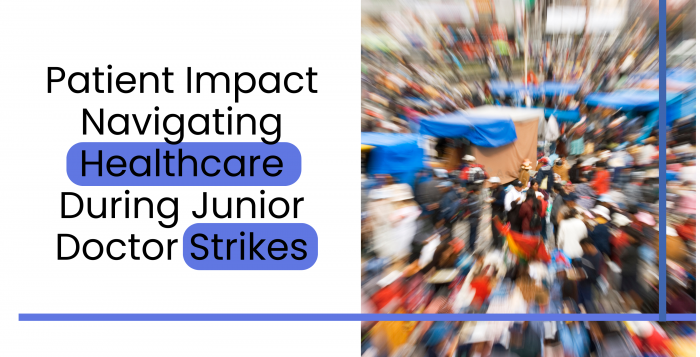Patient Impact: Navigating Healthcare During Junior Doctor Strikes
Junior doctor strikes, while a means for medical professionals to express their concerns and advocate for better working conditions, can have significant impacts on patient care. As strikes are scheduled for 2024, it is important to evaluate the potential impacts on patients and explore how health care systems navigate these challenging periods. Level up your nursing assignments with the UK best nursing assignment help online. Take your educational journey to new heights with the help of experts🌟.
1: Understanding Junior Doctors’ Strikes
To understand the patient impacts during junior doctors’ strikes, it is first important to understand the reasons behind these protests. Junior doctors, often in the early years of their medical careers, advocate for fair working hours, fair pay, and better conditions to ensure the well-being of both medical professionals and their patients.
2: Disruption of Routine Medical Services
One of the immediate consequences of the junior doctors’ strike is the disruption in routine medical services. Non-emergency procedures, outpatient appointments, and elective surgeries may be postponed or canceled, impacting patients who rely on these services for a variety of health issues. This disruption can lead to a backlog of cases, potentially affecting patient outcomes.
3: Increasing pressure on emergency courts
With routine services disrupted, emergency departments often suffer increased pressure during junior doctors’ strikes. Patients who would normally seek care through other channels may be referred to emergency services, resulting in longer waiting times and potential strain on critical resources. This increased demand in emergency departments may compromise the quality of care for people with urgent medical needs.
Topic 4: Challenges in continuity of care
Patients who require ongoing or specialized care may face challenges in continuity of care. Scheduled follow-up appointments, treatments, and cures may be delayed, impacting the overall management of chronic conditions. Maintaining consistent care is essential to effectively managing health conditions, and disruptions can have long-lasting effects on a patient’s health.
5: Communication Breakdown
During strikes, communication between health care providers and patients may be strained. Patients may face delays in obtaining information about their appointments or accessing medical advice. Effective communication is essential to patient care, and barriers to communication can increase patient confusion and anxiety.
6: Vulnerable Populations at High Risk
Some populations, such as the elderly, people with chronic diseases, and those with limited access to alternative health care, may be disproportionately affected during junior doctors’ strikes. Ensuring the well-being and well-being of these vulnerable groups becomes a key concern, requiring proactive measures to reduce potential harm.
Title 7: Community Outreach and Support
Health care organizations and community organizations play an important role in mitigating the impact on patients during junior doctors’ strikes. Proactive community outreach, clear communication about alternative care options, and establishing support systems can help address concerns and ensure that patients get the help they need.
Topic 8: Managing Resources Effectively
To navigate the challenges faced by junior doctors’ strikes, the health care system must manage resources effectively. This includes strategic planning to prioritize emergency cases, reallocate medical staff to critical areas, and seek new solutions to maintain essential services.
9: Clear communication with patients
Clear communication with patients is of utmost importance during the junior doctors’ strike. Health care providers should keep patients informed about their appointments, alternative care options, and any possible delays in services. Open communication fosters trust and helps patients feel supported during uncertain situations.
10: Post Strike Recovery and Follow Up
After the strikes are resolved, a concerted effort is needed to resolve any backlog of cases and ensure patients receive the necessary follow-up care. Health care organizations should implement strategies to expedite delayed delivery, reschedule appointments, and provide additional support for those impacted by disruptions.
Conclusion:
Although junior doctors’ strikes serve as a powerful tool to advocate for better working conditions within the medical profession, their effects on patients cannot be ignored. Effective management strategies, clear communication and community support are essential elements in reducing the challenges faced by patients during this period. As health care systems navigate the coming junior doctor strikes in 2024, the balance between addressing the concerns of medical professionals and ensuring continuity of high-quality, accessible care for all patients should be established.



